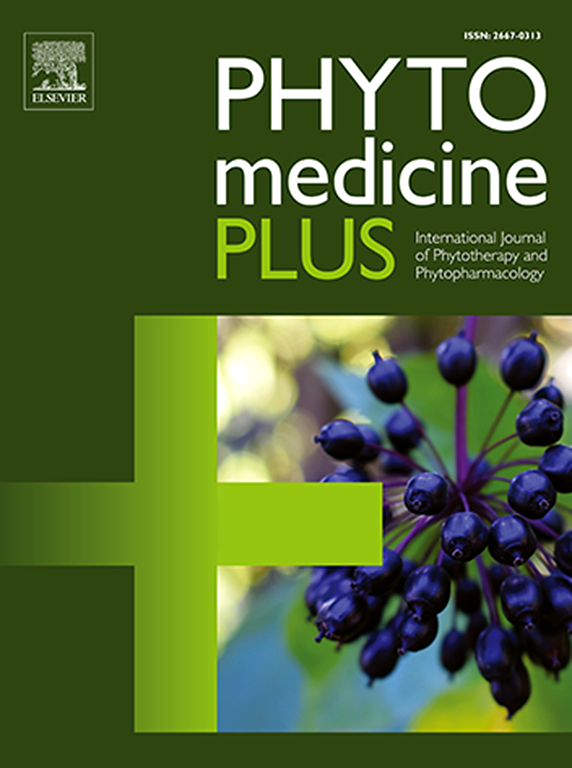利用自然的潜力:探索宫颈癌中的植物雌激素
Q3 Pharmacology, Toxicology and Pharmaceutics
引用次数: 0
摘要
植物雌激素是一种结构与17-β-雌二醇相似的植物源性化合物,由于其雌激素和抗雌激素的特性而引起了越来越多的研究兴趣。本文综述了主要植物雌激素的类型、代谢和生物利用度,包括异黄酮和木脂素,以及它们在宫颈癌预防中的潜在作用。异黄酮和木脂素主要存在于大豆类食品中,亚麻籽和全谷物中含量更高,它们分别是两种主要的植物雌激素。这些化合物的代谢是复杂的,受肠道微生物群和遗传因素的影响,并导致产生生物活性代谢物,如雌马酚和肠内酯。这些代谢物与雌激素受体通路相互作用,产生抗氧化、抗炎和促凋亡作用,这支持了它们调节激素敏感条件的作用。一些流行病学数据表明植物雌激素摄入与宫颈癌风险之间可能存在负相关,尽管由于饮食评估方法和个体间代谢反应的差异,研究结果仍不一致。分子和实验研究表明,植物雌激素抑制宫颈癌细胞增殖,促进细胞凋亡,降低氧化应激,符合其预防和治疗作用。这篇综述还概述了植物雌激素研究中存在的一些方法上的挑战,包括缺乏标准化的测量技术,饮食摄入评估的可变性,以及遗传和种族差异对代谢和生物利用度的影响。这些因素突出了跨学科研究提高准确性和可比性的必要性。这对女性健康的影响是重大的。植物雌激素是一种具有成本效益的、以饮食为基础的策略,可以补充现有的干预措施,如HPV疫苗接种和宫颈筛查,以改善宫颈健康结果。包括代谢组学和基因组分析在内的新兴技术可能支持个性化饮食建议的发展,并扩大对植物雌激素治疗潜力的理解。目前证据的综合强调了植物雌激素在预防医学中的重要性,并为促进妇女健康和宫颈癌管理提出了新的方向。本文章由计算机程序翻译,如有差异,请以英文原文为准。

Harnessing nature's potential: Exploring phytoestrogens in cervical cancer
Phytoestrogens are plant-derived compounds with structural similarity to 17-β-estradiol and have attracted increasing research interest due to their estrogenic and antiestrogenic properties. This review provides a comprehensive overview of the types, metabolism, and bioavailability of major phytoestrogens, including isoflavones and lignans, and their potential role in cervical cancer prevention. Isoflavones and lignans found primarily in soy-based foods and are more abundantly in flaxseeds and whole grains, respectively are the two main phytoestrogen classess. The metabolism of these compounds is complex, influenced by gut microbiota and genetic factors, and leads to the production of bioactive metabolites such as equol and enterolactone, respectively. These metabolites interact with estrogen receptor pathways, producing antioxidant, anti-inflammatory, and pro-apoptotic effects, which supports their role modulating hormone-sensitive conditions. Some epidemiological data suggest a possible inverse association between phytoestrogen intake and cervical cancer risk, although findings remian inconsistent due to variations in dietary assessment methods and inter-individual metabolic responses. Molecular and experimental studies show that phytoestrogens inhibit cell proliferation, promote apoptosis in cervical cancer cells, and reduce oxidative stress, aligning with their proposed preventive and therapeutic benefits. This review also outlines several methodological challenges in phytoestrogen research, including the lack of standardized measurement techniques, variability in the dietery intake assessment, and the influence of genetic and ethnic differences on metabolism and bioavailability. These factors highlight the need for interdisciplinary research to improe precision and comparability. The implications for female health are significant. Phytoestrogens represent a cost-effective, dietary-based strategy that may complement existing interventions—such as HPV vaccination and cervical screening—to improve cervical health outcomes. Emerging technologies, including metabolomics and genomic profiling, may support the development of personalized dietary recommendations and expand understanding of the therapeutic potential of phytoestrogens. The synthesis of current evidence underscores the importance of phytoestrogens in preventive medicine and suggests new directions for advancing women's health and cervical cancer management.
求助全文
通过发布文献求助,成功后即可免费获取论文全文。
去求助
来源期刊

Phytomedicine Plus
Medicine-Complementary and Alternative Medicine
CiteScore
3.70
自引率
0.00%
发文量
178
审稿时长
81 days
期刊介绍:
 求助内容:
求助内容: 应助结果提醒方式:
应助结果提醒方式:


